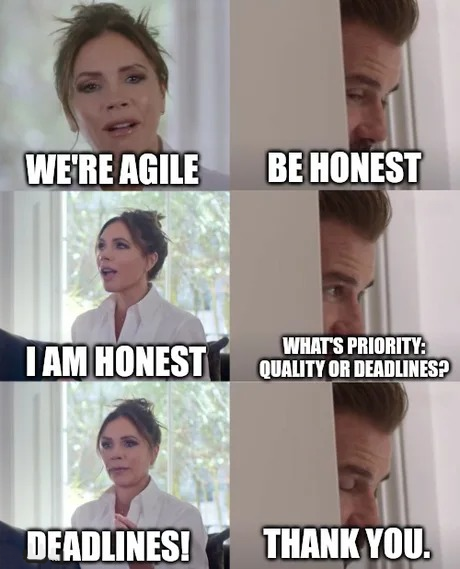PLM software helps manage every phase of a product's lifecycle, improving efficiency and collaboration across teams, from conception to product launch. Key Takeaways PLM software is essential for managing the complete lifecycle of a product, from
Disadvantages of Agile Project Management: Is It Right for Your Team?
Agile methodology is popular for its flexibility and ability to adapt quickly to changes. However, like any approach, agile has its limitations. This article explores the potential drawbacks of agile, helping project managers, team leads, and stakeholders decide whether agile is the right fit for their teams and projects.
Key takeaways
Scope Creep Risk: Agile's flexibility can lead to uncontrolled expansion of project scope.
Documentation Challenges: Emphasis on working software over documentation can leave critical information missing.
Team Dependency: Agile requires a high level of collaboration and self-management, which may not suit all teams.
Understanding agile's limitations
Agile methodology has revolutionized project management by offering flexibility, iterative development, and rapid adaptation to changes. However, Agile is not a one-size-fits-all solution. Its adaptability, while beneficial in many scenarios, can pose challenges that may not work well for every project or team. This article examines the key disadvantages of Agile, providing insights into when this approach might not be the best option.
Disadvantages of agile methodology
Scope creep and lack of defined goals
One of the core principles of Agile is flexibility, which allows requirements to evolve throughout the project. While this can be advantageous, it can also lead to scope creep, where new features and changes are continuously added, resulting in uncontrolled expansion. Agile’s iterative approach often means projects lack a clearly defined end goal, which can be problematic for teams accustomed to more structured plans. This may lead to extended timelines, increased costs, and difficulties in tracking progress.
Example: In Agile projects, stakeholders frequently request additional features or changes mid-project. While Agile is designed to accommodate change, this flexibility can overwhelm the team with requests, causing delays and impacting the budget. [Learn more about scope management in Agile projects](Understanding the Project Management Triangle).
Documentation gaps
Agile prioritizes working software over detailed documentation. This focus on quick development and frequent releases can result in inadequate documentation, creating knowledge gaps. For teams that rely on thorough records, Agile’s lighter approach to documentation can cause challenges during onboarding, training, and project maintenance.
Example: In a Waterfall project, documentation serves as a roadmap for every stage. In Agile, teams may skip or minimize documentation to speed up delivery, leaving critical information undocumented. For complex projects requiring detailed handoffs, this can be a significant drawback. [Learn more about Agile's approach to documentation](What Is the Agile Manifesto?).
Team dependency and self-management requirements
Agile demands high levels of collaboration, self-organization, and accountability from team members. Not every team is equipped to handle this autonomy, leading to inconsistencies in productivity and output. Agile’s dependence on team dynamics becomes challenging if team members lack experience or struggle with self-management.
Example: In an Agile project, less top-down control means team members are expected to take ownership of their work. If team members lack the necessary skills or motivation, it can slow down the entire project. Lean more in "Agile Team Structure: Roles and Responsibilities for Effective Collaboration".
High demand on client involvement
Agile projects typically require regular feedback and involvement from clients or stakeholders. While this ensures the project aligns with client needs, it also demands significant time and communication, which may not always be feasible for clients with limited availability or resources.
Example: In Agile, clients participate in frequent review sessions, such as sprint reviews. This continuous engagement can be challenging for clients who are busy or have competing priorities, leading to delays or misaligned expectations.
Agile implementation challenges
The chart illustrates the frequency of common challenges in Agile projects. Resource flexibility issues affect 80% of projects, while documentation concerns impact 65%. Scope uncertainty presents challenges in 70% of cases, and team adaptability issues arise in 60% of Agile implementations.

When agile may not be the best fit
Despite its many advantages, Agile is not always the best choice for every project. Agile may not be suitable for:
- Projects with Fixed Requirements: When requirements are clearly defined and unlikely to change, a more structured methodology like Waterfall might be more effective.
- Large or Distributed Teams: Agile tends to be most successful in smaller, co-located teams. Large or distributed teams may face challenges with communication and alignment.
- Industries Requiring Extensive Documentation: For projects where thorough documentation is critical—such as in healthcare, finance, or government—Agile’s lighter documentation approach can pose problems.
Overcoming agile’s challenges
If Agile aligns well with your project but you’re concerned about its drawbacks, there are ways to address these challenges:
- Define Boundaries for Scope Flexibility
To avoid scope creep, establish clear boundaries for the flexibility allowed within the project. Prioritize core features and manage additional requests through a backlog. - Balance Documentation and Flexibility
While Agile de-emphasizes documentation, implement a lightweight documentation strategy. Focus on documenting critical information, especially when handing off work to other teams or departments. - Provide Training and Support
For teams new to Agile, provide training and resources to help them adapt to self-management and collaboration requirements. Arrange mentoring or coaching for less experienced team members.
Interesting fact 
Did you know? The creators of the Agile Manifesto intended to develop a flexible alternative to rigid project management methods. However, in recent years, some organizations have "over-structured" Agile, turning it into a rigid process itself—ironically losing the flexibility it was meant to provide.
For a deeper dive into Agile principles, explore "What Is the Agile Manifesto? Understanding Its Core Values and Principles". Learn how to effectively manage team dynamics in our article "Agile Team Structure: Roles and Responsibilities for Effective Collaboration". For strategies to align client expectations, check out "Project Roadmap: A Strategic Guide to Planning and Executing Successful Projects".
Conclusion
Agile project management is an effective methodology for many projects, but it is not without challenges. From scope creep to documentation gaps, Agile’s flexibility can lead to unique issues that may not suit all teams or industries. Understanding these potential disadvantages helps project managers and stakeholders make informed decisions. By balancing flexibility with clear boundaries and documentation, teams can enjoy the benefits of Agile while minimizing its limitations.
Recommended Reading 

"Scrum: The Art of Doing Twice the Work in Half the Time"
A practical guide to the Scrum methodology.
On Amazon
"Agile Project Management with Kanban"
Learn how Kanban can complement Agile project management.
On Amazon
"The Lean Startup"
A valuable resource for understanding iterative processes and lean management.
On Amazon






